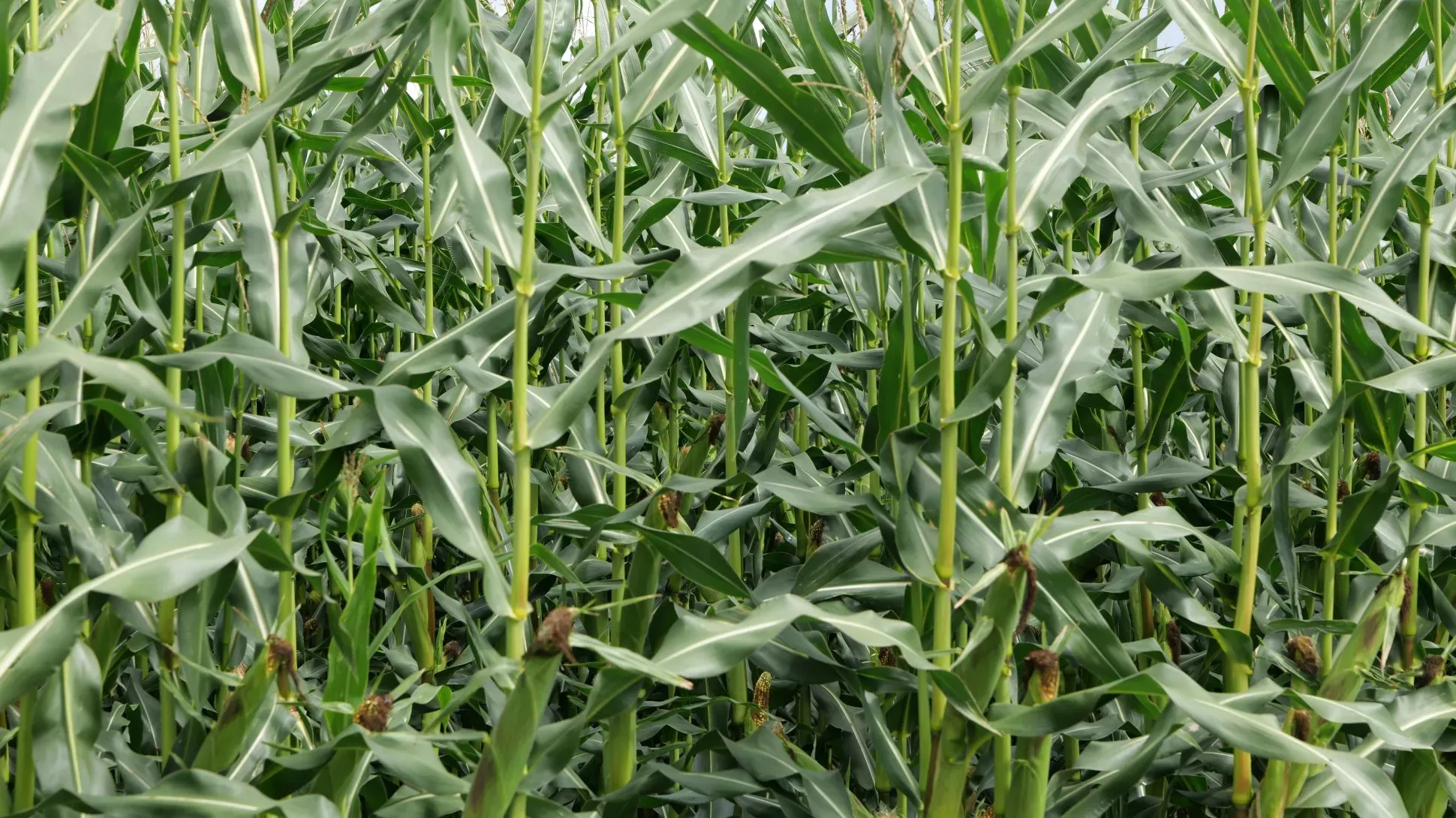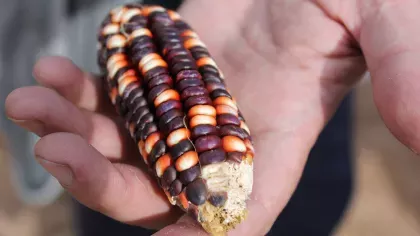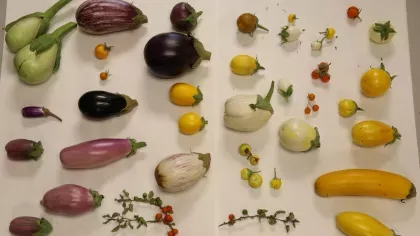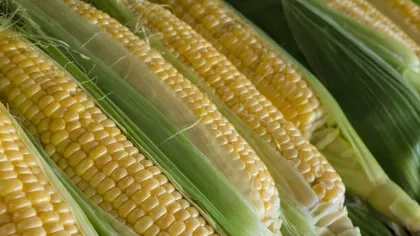14 February 2023
The power of companion planting
How crops can thrive with a little help from their friends.

With 1.5 billion hectares of cropland in the world today, farming is a pretty big deal.
But as we produce more and more crops, we need to make sure we’re doing it in a more sustainable way. Some modern farming techniques, while effective, produce high yields at the cost of the ecosystems around them.
That’s why we’re looking at techniques to farm in a way that works alongside nature, including a very ancient technique; companion planting.
What is companion planting?
Much of the commercial farming done today focuses on growing crops in a monoculture – growing only one type of crop in a field.
While this increases production, and makes it easier for farmers to process and gather crops, it runs the risk of pests and diseases spreading, soil health depleting and local levels of biodiversity decreasing.
Companion planting is an alternative to monoculture. Alongside the crops that you want to harvest, you also plant other species that have a positive effect.
This can range from reducing pests, increasing pollination, and even making crops more nutritious.
But companion planting isn’t a new idea. In fact, it’s been a part of agriculture for thousands of years.

Introducing the Three Sisters
Several groups of indigenous peoples in North America have been making use of companion planting to maximise their crop growth since the dawn of plant domestication.
The key companion planting technique used maize (Zea mays), beans (such as Phaseolus vulgaris) and squash (Cucurbita pepo), collectively known as the Three Sisters.
These three plants work together in beautiful symbiosis to grow stronger than they ever could separately, with each individual supporting the growth of the other two.
The bean and maize seeds are planted together in small mounds of earth, with squash seeds sown in between.
The maize grows tall, which provides a structure for the beans to climb. In return, the tendrils of the bean plants wrap around the maize stem, securing against damage from high winds. The beans also provide another benefit in nitrogen fixing – they can harness the nitrogen in the air, and move it into the soil in a form that the plants can make use of.


The squash work on the ground looking after the soil for the other plants. Their wide leaves cover the ground, stopping it from drying out, as well as preventing the growth of unwanted weeds. Certain varieties of squash have spiny leaves that deter any potential grazers, like deer or squirrels, from taking a bite out of the crops.
Some North American peoples also plant flowering crops around the edges of their fields, such as sunflowers (Helianthus anuum), which encourage visits from pollinators and create a natural boundary fence.

With friends like these
The Three Sisters is a fantastic example of how companion planting can support crops, but it’s far from the only example.
Sometimes this can happen as a happy accident. Clover, a plant often seen as an unwanted weed, is actually a member of the legume family. This means, just like beans in the Three Sisters, they are able to fix the nitrogen into the ground. Many grass crops, like rice or wheat are then able to use this fixed nitrogen to grow stronger, and more nutritious.
Other companion planting strategies involve keeping potential pests away from your fruits and veg. A famous pairing of crops is carrot and onion, which protect each other from potential predators with their odours.


The maggots of the onion fly (Delia antiqua) can infest the bulbs and stems of onions, potentially destroying whole crops. Similarly, the larvae of carrot flies (Chamaepsila rosae) attack the outer layers of carrots. But chemicals given off by onions repel carrot flies, while carrot chemicals having a similar effect on onion flies.
This happy coincidence means that both plants can grow together, fragrantly keeping each other safe from insect attack.
It’s not just carrots and onions that give off shielding smells. Many marigolds, including Mexican marigolds (Tagetes erecta) are a common sight around vegetable plots, including Edible Science: Kew’s Kitchen Garden.
Marigolds release chemical scents that reduce the reproduction of aphids, helping protect crops against a potentially lethal sap-draining infestation.

Under cover
Another companion planting technique involves keeping your crops in the dark. Well, at least some of the time.
While crops need sunlight to grow, it can be too much of a good thing. Plants can overheat and burn if exposed to too much sunlight.
Trees can provide perfect cover for crops that thrive in shade, which includes certain varieties of coffee.
Shade-grown coffee involves either planting coffee plants (Coffea arabica) alongside young saplings, or planting them in existing forest land, to provide them with a more suitable environment.
The trees provide cover for the coffee, stopping it from getting damaged by the sun, as well as protecting it from heavy winds and rain.
The trees also help to support the ecosystem around the coffee crops, supporting insect life and attracting both pollinators and pest-eating predators.


Looking to the future
Companion planting is an age-old technique that’s now more relevant than ever.
While many of these techniques only work at smaller scales, the principles can teach us ways to feed the world by working alongside nature.
All we need to remember is that just like us, companion plants are stronger together.


